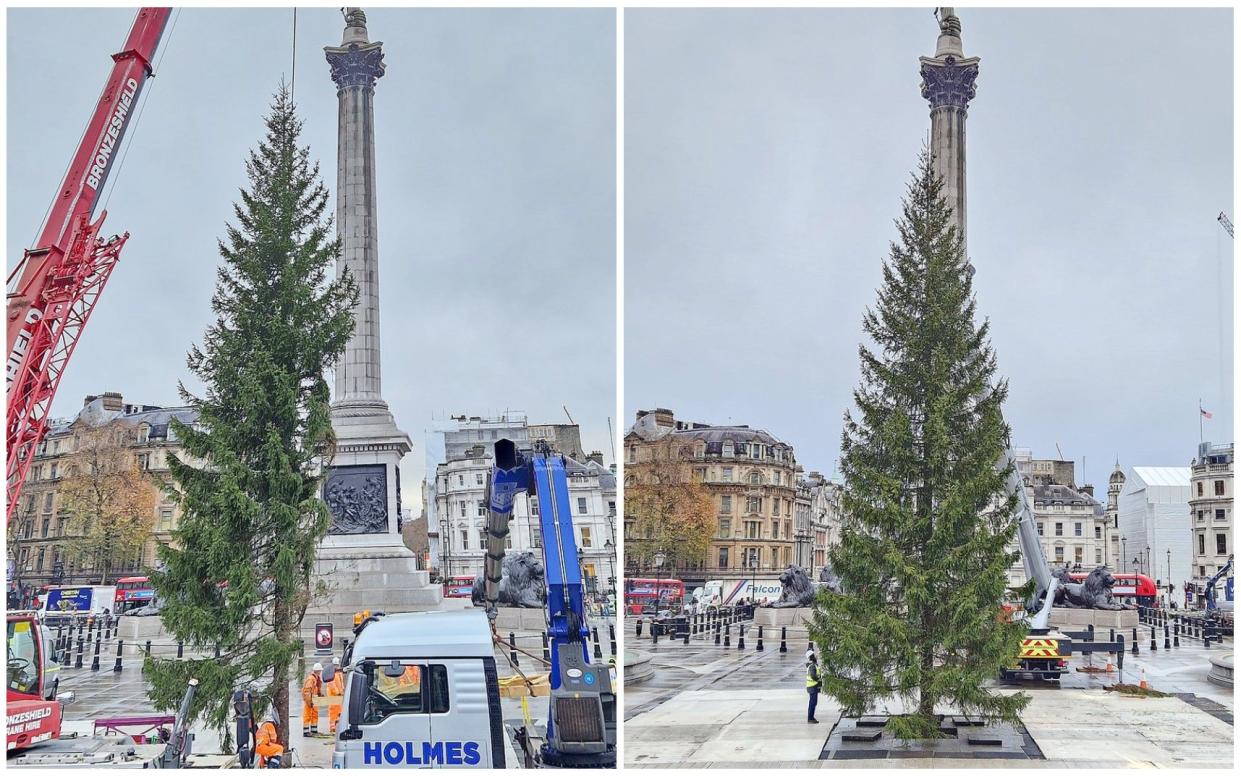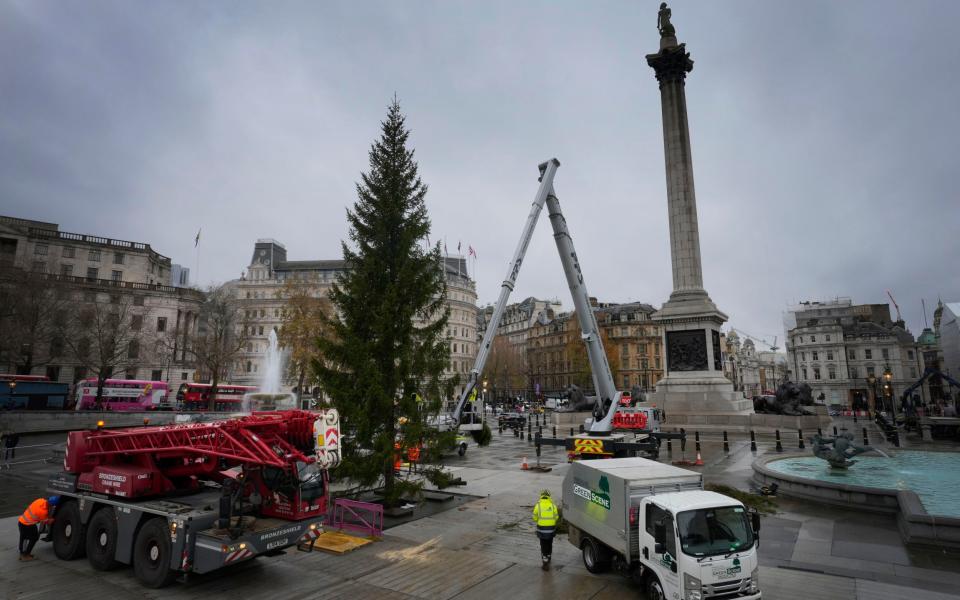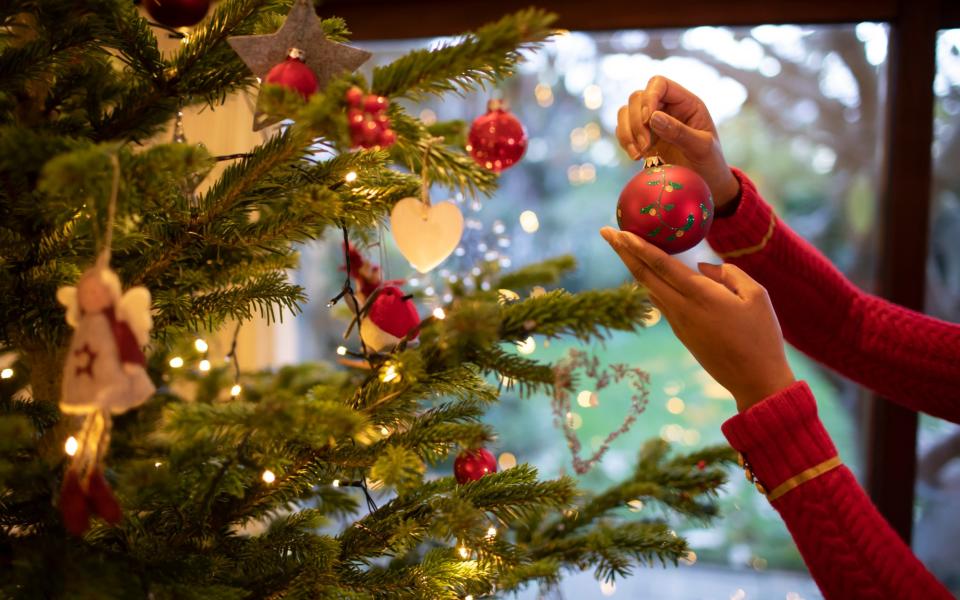What to do with a less-than-perfect Christmas tree

Standing at some 70 feet tall, and about 70 years old, Trafalgar Square’s towering Christmas tree – an annual gift from Norway – does not usually feel particularly relatable. This year, however, with onlookers describing it as “half-dead”, “underwhelming”, “meh” and “meagre”, it felt much more similar to what the unlucky or disorganised ones among us might end up with. Because if you’ve left your tree-shopping a bit late, or have scaled back the budget this year because of the increased cost of living, the chances of acquiring a cut-price supermarket tree that is lopsided, bottom-heavy or gappy (or all of the above) are pretty high – not least when its flaws are conveniently concealed within one of those net stockings, so you don’t know what you’re stuck with until you get it home.
A stingy-looking tree is absolutely not the look for Christmas, when everything at this time of year, from the children’s stockings to the dinner table, the wreath, and of course your festive fir, needs to look full to bursting in order to avoid any Ebenezer Scrooge associations. Which is why, of course, Westminster City Council this week dispatched a team of tree surgeons to Trafalgar Square to perform branch transplants, to create a more luxuriant, symmetrical appearance, just in time for the Christmas lights to be switched on this Thursday.

But what can we do at home to rectify a puny tree? Actually quite a lot, apparently. First, says garden designer Will Williams, creative director of plant supplier Soto Gardens, take a good look all around your tree: “Usually, Christmas trees are grown in large fields in long straight lines – one side will have faced north, and would not have had as much sunlight. Spin it around to select its best side.” He also advises lopping off the bottom 2.5cm of the trunk to perk it up a bit: “It will help it absorb more water and will last longer.”
Even if your tree is seriously balding, it’s quite possible to transplant its more bushy branches, Trafalgar Square-style, to where it’s thinning, without the need for tree surgeons, saws or cherry pickers. “Green floristry wire and secateurs would be my weapons of choice,” says Richard Moore of Event Trees, the firm responsible for the festive frontage at Winter Wonderland in Hyde Park this year. With the secateurs it’s easy enough to remove some of the lower branches – you could strip the trunk of about four inches’ worth, he advises. “Then trim them to size, and wrap two strands of floristry wire around both ends of the branch that sits above the gap, and then around the replacement branch.” The new branch will now hang like a swing beneath the support branch. “No one will ever know.”
What can be done about those pear-shaped Christmas trees where the top section is almost bare? More branch transplants, suggests Moore, more floristry wire. “You could take some branch offcuts and, with the floristry wire, wrap the thicker end vertically up the bare trunk and let the rest peel off out to the side.” If you run wire down the length of each prosthetic branch, he adds, “you can bend it into shape”. Or, Moore suggests, you could always buy a “really cheap” fake Christmas tree, “and with wire cutters, cut bits off to add to your tree – it will bend like floristry wire and give you the extra foliage.” (If you are going for the sacrificial tree option, try to buy it secondhand.)
So hopefully by now your “Charlie Brown” Christmas tree will be looking more lush and balanced. At this point you can lean on decorations to cover any imperfections. Will Kidger of Send Me A Christmas Tree suggests hanging your heavier ornaments on branches above any remaining gaps: “The weight of the decoration will obviously change how much the branch bends, and will bring the foliage down.” He also recommends getting a bit American about it, and adding lots of big bows and ribbons: “You could wrap the whole tree in ribbons as you would with lights.”

In fact, adds Moore, “If you feel you’ve still got a bit of a Frankenstein tree after the surgery, just keep going with the decorations,” tucking them deep into the tree. And don’t scrimp on lighting: “You can never put too many fairy lights on a tree,” he says. (John Lewis recommends 100 bulbs per vertical foot of tree; many advise using even more.) If you’ve really left it too late and all the requisite warm white LEDs have sold out, a mix of warm and cool can look good, Moore assures: “It gives an interesting, slightly different look.”
To preserve what’s left of your tree, Kidger advises keeping it cool and healthy, and spritzing it regularly with water: “It’s like a cut flower, so the more you can get it to drink and remain hydrated, the better.”
The main thing though, adds Kidger, “is just to appreciate your tree – they all have their quirks. It’s a natural product, so learn to love it.”


